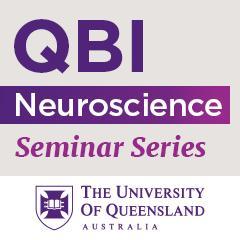Professor Warwick Bowen, UQ : "Quantum and precision sensing: advances and applications in the biosciences"

Speaker:
Professor Warwick Bowen
School of Mathematics and Physics, The University of Queensland
Title: "Quantum and precision sensing: advances and applications in the biosciences"
Abstract:
It has been known for over a century that, in quantum physics, even the act of looking can have dramatic consequences. For instance, it kills the cat in Schrödinger’s famous thought experiment. However, it has proved extremely difficult to observe such effects in practice, except for the smallest atom-scale objects, let alone to use them as a tool to enhance technologies.
Over the past decade, however, advances in nanotechnology have allowed us to engineer devices which exhibit this distinctive quantum behavior [1]. These “quantum optomechanical devices” consist of a nanoscale mechanical object – for example, a nanoparticle, molecule or cantilever – coupled to light via radiation pressure, often concentrated in a tiny optical cavity. In essence, they are miniature versions of the kilometer-scale interferometers that have enabled the extraordinary detection of gravitational waves from distant black hole collisions (see Figure). Quite remarkably, they can allow measurements of motion at the sub-attometre level – more than a thousand times below the width of an atomic nucleus. At the fundamental level, this allows us to ask new questions of quantum physics for macroscopic systems consisting of trillions of atoms. It, further, provides a pathway to future quantum technologies and precision optical sensors that far outperform the current state-of-the-art.
In this talk, I will provide an overview of quantum optomechanical sensing research in my laboratory in the context of applications in the biosciences. This includes ultraprecise optical tweezers that allow tracking of the instantaneous velocity of trapped particles [2] and through this orders-of-magnitude faster measurements of cell properties reaching hundred- nanosecond timescales; unlabeled single molecule sensing with ten-nanometre resolution and optical intensity’s many orders of magnitude beneath existing technology [3]; air-coupled ultrasound transducers with orders-of-magnitude better sensitivity than the current state-of-the-art [4]; and room temperature silicon-chip-based magnetometers with precision exceeding the best commercial cryogenic magnetometers [5], that could allow miniature lab-on-a-chip MRI and potentially improved brain imaging.
References
1. Bowen and Milburn, Quantum Optomechanics, CRC Press (2016).
2. To be published, but see also Nature Photonics 9, 669-673 (2015); Nature Photonics 7, 229-233 (2013).
3. See e.g. Nature Photonics 11, 477-481 (2017).
4. See e.g. Nature Communications 10, 132 (2019).
5. See e.g. Advanced Materials 6, 6348-53 (2014).
About Neuroscience Seminars
Neuroscience seminars at the QBI play a major role in the advancement of neuroscience in the Asia-Pacific region. The primary goal of these seminars is to promote excellence in neuroscience through the exchange of ideas, establishing new collaborations and augmenting partnerships already in place.
Seminars in the QBI Auditorium on Level 7 are held on Wednesdays at 12-1pm, which are sometimes simulcast on Zoom (with approval from the speaker). We also occassionally hold seminars from international speakers via Zoom. The days and times of these seminars will vary depending on the time zone of the speaker. Please see each seminar listed below for details.



